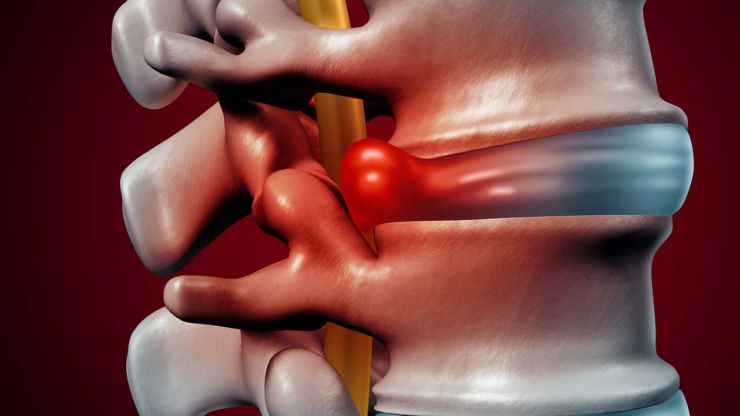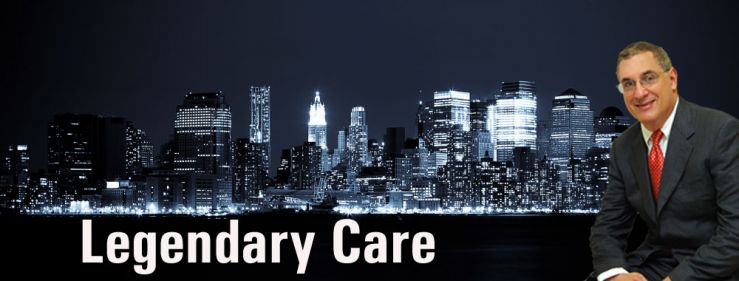Vertebral Disc Disorders
In lay terms, a Slipped Disc may be used to refer to a Ruptured Disc. However, either term is better known medically as a Herniated Disc (her-knee-ate it). Although the term 'slipped disc' is used, discs do not actually slip.

Each disc is sandwiched in between vertebrae supported by a system of ligaments designed to hold the spinal package together. Disc disorders are either Contained or Non-Contained.
An example of a Contained Disc disorder is a Bulging Disc. A disc that bulges does not break open; it keeps the nucleus pulposus 'contained' within the anulus.
A bulging disc could be compared to a volcano before it erupts and may be a precursor to an actual herniation. The disc protrudes into the spinal cavity with out breaking open. The gel-like interior (nucleus pulposus) does not leak out. The disc remains intact, except a small bubble pops out attached to the disc.
A Non-Contained Disc is one that has either partially or completely broken open. This is termed a Herniated (her-knee-ate-it) or ruptured disc.
To illustrate, imagine a tube (anulus) of tooth paste (nucleus) placed under pressure. The pressure causes the toothpaste within the tube to move wher ever it can. If any part of the tube is weak, pressure may cause the toothpaste to leak out
When one or more discs herniate or rupture, the contents may spread toward nerves. The disc material has only one injurious place to go, back into the spinal canal where the nerve roots live.
Returning to the leaky tube of toothpaste, the disc's gel-like nucleus contains a chemical that irritates the nerves causing them to swell. After the chemical agent has done its job, the 'chemical blob' remains and continues to press on the irritated and swollen nerve(s).
To complicate matters, sometimes fragments from the anulus (the tire-like outer disc wall) break away from the parent disc and drift into the spinal canal. Once free fragments enter the spinal canal, they may travel up and down as though riding an elevator.
Depending on the type of injury and the condi tion of the discs, it is possible for more than one disc to slip, herniate, rupture, or bulge. Sometimes injury results in a combination of disc disorders.
